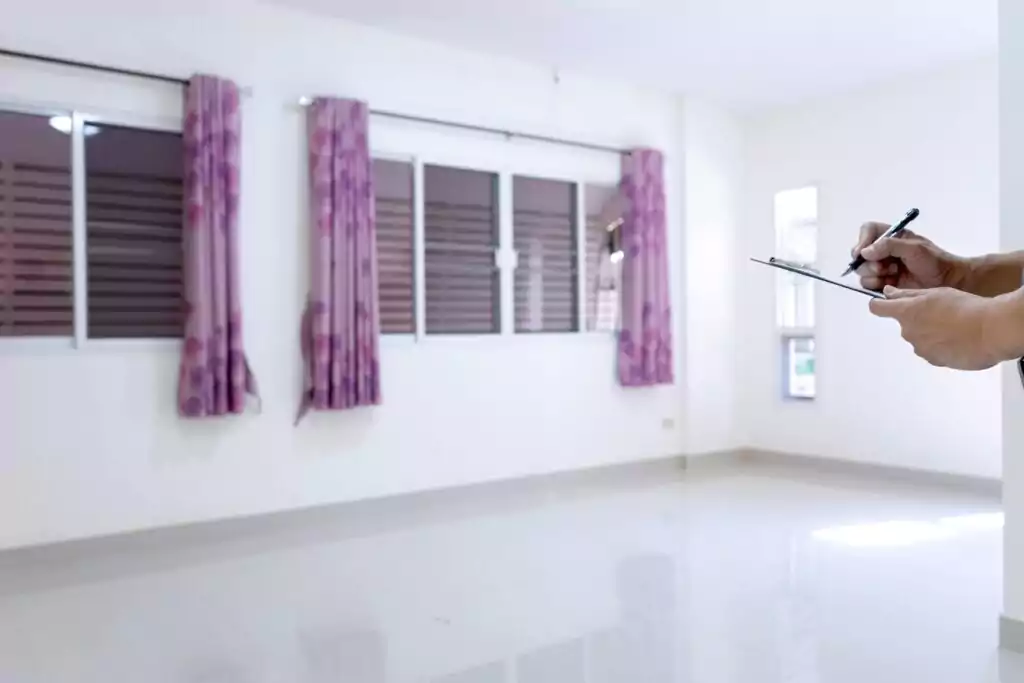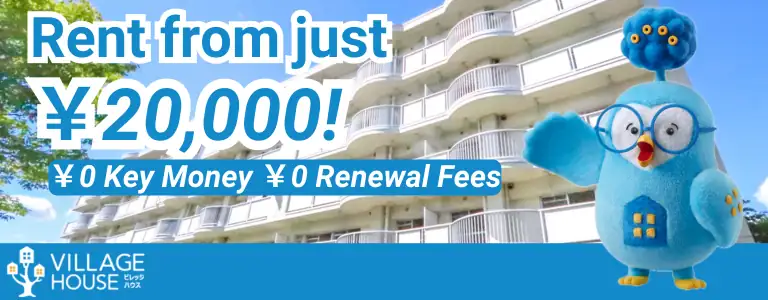Whether you’re new to the apartment hunting game (if so, your ideal apartment might be waiting for you on our Village House website!) or an old pro, it’s always good to either arm yourself with the necessary knowledge before embarking on an apartment tour or update yourself with a refresher course to avoid any snags or traps.

Appointment
Before a tour of any accommodation can commence, you must first make an appointment with the owner, landlord, or more commonly in Japan, a real estate agent. If you’re going with a real estate agent you can either look up listings online and request for a tour of that specific listing online or you can mosey yourself down to the nearest real estate office where after an initial assessment of your wants and needs, an appointment(s) can be made for a listing(s) that suit your requirements. At Village House for example, you can contact one of their offices by phone or fill out an online form via their website to schedule an appointment.

Ask Questions
Communication is key to ensure that you get the apartment your heart desires…or at least meets a good handful of your requirements. The best way to achieve this is to ask questions. Don’t be shy; the real estate agent, landlord, or owner will expect this and should be able to answer any inquiries you may have, hopefully to your satisfaction.
While this may be a matter of preference, it may be better to come prepared with a list of questions before inspecting any listings. If you then forget to ask something, you can do so during the apartment tour.
Here are some common inquiries that real estate agents and landlords commonly get asked:
- How much is the monthly rent?
- What are the initial costs?
- How many months’ rent is the deposit?
- What is included in the rent – utilities, parking fee, storage?
- Are there any other fees on top of rent – parking, hallway maintenance, etc.?
- What methods of payments are accepted/preferred – direct debit, bank transfer, etc.?
- Do I need a guarantor? What about references from previous landlords, owners, or real estate agents?
- Are pets allowed?
- Is it furnished?
- Is there onsite parking? What about bicycle parking/storage?
- Is subletting allowed?
- What are the penalties – if any – if you break your lease early?
- Is there a renewal fee?
- What do the moving-out fees consist of?
- Will the apartment be ready to move in – pre-cleaned and inspected for any faults or damages?
- Are you allowed to make any changes to the apartment’s interior – painting the walls, hanging pictures, general DIY, etc.?

Apartment Tour Checklist
Now that you’ve asked your questions and secured an appointment to see some properties, what you need – or should! – do is to make an apartment tour checklist. Again, don’t hesitate to take your time while on the tour to check every nook and cranny of the place – it might be somewhere you’ll be putting roots down on! At Village House, they understand the need to be thorough and emphasize prospective tenants being able to inspect each of their properties to their satisfaction. They encourage you to “check out the size and lighting of the room; look at the surroundings; and soak up the atmosphere”.
So, what goes into making an apartment tour checklist? Well, the best way to go about it is to break it down room by room:
General
- Check all floors, windows, ceilings, stairs, etc. for any pest droppings/carcasses/claw marks, water damage and stains, mold, etc.
- Open and close all windows and doors to see if they work and lock as they should, and are free from any rust, cracks, squeaky hinges, etc.
- Check the functionality of the power outlets – do they work? You can plug in your phone to check
- Flip the light switches on and off
- Check the functionality of any smoke alarms, sprinkler systems, security systems, etc.
Bedroom(s)
- Inspect and measure the size of the bedroom, especially if it’s unfurnished and you’re planning to move any furniture you may already own
- Check the size of the closet – will it fit all your stuff?
- If it’s a furnished apartment, check the conditions of the bed, drawers, nightstand etc.
- Check the functionality of any A/C and/or heating systems
Bathroom(s)
- Turn on and off all faucets to check the water pressure, hot, and cold water – do they work, and is the water coming out clear?
- Flush the toilet and check the functionality of the bidet buttons if any
- Turn on and off the shower – does the showerhead work?
- Check for water damage, limescale, mold, etc.
Living Room
- Inspect and measure the space if you’re planning to bring your couch and other pieces of furniture
- Inspect the soundproofing – is it quiet? Can you hear your neighbors? Can your neighbors hear you?
- Check the number of outlets – is there enough for all your appliances and gadgets?
Kitchen
- Turn on and off the kitchen faucet – is the water pressure good? Is there hot and cold water? Is the water clean?
- Check under the sink for any mold, pests, leaks, etc.
- If there are any cabinets and drawers, open and close them to test their functionality as well as to see if they’re hiding any unwanted surprises aka. bugs.
- If the kitchen is furnished, test all appliances to make sure they work
Apartment building
- Check accessibility into the building – is it safe? Well lit at night?
- Check any parking, bicycle storage, general storage etc.
- Is the mailbox in a secure area? Where do delivered packages go?

Damage Indicators
Possibly the most important thing to look out for is any damage in the apartment that’s not your standard wear and tear. You don’t want to be accused of being responsible for any damage done by the previous tenant that has gone unnoticed and end up paying damage fees when you move out. Check for:
- Water damage, water stains, leaks, mold, mildew etc. in areas with running water
- Any exposed wiring, lights that don’t work or take a while to turn on or flicker
- Cracked window panes, squeaky or unstable window hinges etc.
- Peeling paint or wallpaper
- Broken appliances/furniture
- Evidence of pests – claw marks, chew marks, droppings, carcasses
- Strange smells – gas, carbon monoxide leaks etc.

Community
The apartment and the building it’s in is not the only place you should inspect. The surrounding neighborhood should also be eyeballed thoroughly. Ask about or check:
- Distance to the nearest public transport – is it walkable? Do you need to bike there?
- Commuting distance to your office or school – is it reasonable? Within budget?
- Is the area convenient – are there grocery stores, pharmacies, convenience stores, nearby hospitals or clinics, schools, parks, gyms, etc.?
- Is the area quiet – in a residential area, near a busy road, close to bars, etc.?
- How safe is the neighborhood – any issues with crime, rowdy neighbors, gang activity, etc.?
Hopefully, the lists above will help make your apartment tour as smooth and seamless as possible. If you feel like this article helped at all, then make that appointment and put on your best detective hat, ask questions and examine everything with a critical eye! Are you still searching for a suitable apartment? Please consider checking out our available properties!



